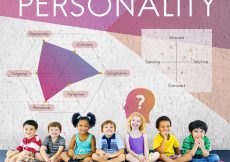As children begin to read and write their first words, understanding phonics becomes an integral part of that learning process. So, what is phonics? Simply put, phonics is a way to teach children how to read and write. It primarily helps them hear, understand, and use different sounds to differentiate one word from another. Consider the English language as a code. So, understanding how each letter sounds individually and when combined with others help the children ‘decode’ the words as they read or write.
For instance, the sound for the letter k can be pronounced as /c/, /ch/, /ck/, or /k/. At the same time, the child learns the sound of more letters and makes words from them, say /t/, /p/, /s/, or /a/, to form pat, taps, sat, spat, and more! Wondering how you can make your children learn phonics? Try some fun phonics games and activities for kids.
30 Phonics Games and Activities for Kids
1. Pancake flip
If your child is a fan of pancakes, this game may be great for learning phonics! Take brown cardboard and cut it into circles. You can cut eight to 10 circles and write the letters you want to begin with. Give your child a spatula and ask them to flip over each pancake. As they flip, encourage them to pronounce the sound of that letter. That’s it! You can also include more letters.
Age group: 3 to 5 years
2. Mix and match cups
For this phonics game, you just need some leftover plastic cups. Take small bits of paper and use a marker to write letters on the cups. Stick those pieces of paper with letters on the cups. Ask your child to rotate these cups to make different words and read them out loud. This game is particularly useful for consonant-vowel-consonant words or CVC words such as zip, cat, pen, rug.
Age group: 5 to 7 years
3. Newspaper hunt
Now, who doesn’t love scavenger hunts? It gives children a burst of enthusiasm and energy to solve the mystery. So, why not channel this energy into learning phonics. Pick out some old newspapers or magazines and ask your child to identify images that begin with a specific sound or letter.
Age group: 4 to 6 years
4. Sound cups
For this simple and easy phonics game activity, all you need are 26 plastic cups. Label each cup with a unique letter, covering all 26. Now, collect a set of small objects or toys and place them in a basket. Ask your child to sort all these objects into respective cups based on the sounds these begin with.
Age group: 4 to 6 years
5. Pick the odd one out
This phonics game requires you to create or download freely available alphabet cards. Each of the cards will have a letter and corresponding objects. Encourage your child to go through each card, identify the sound and circle the image which does not begin with the same sound or is the wrong picture. For instance, for letter b, the three images can be of bear, boat, and dog. Children will mark the picture of the dog that does not belong to the letter b.
Age group: 3 to 5 years
6. Pick an ice cream stick
All you need is a bunch of ice cream sticks with all 26 letters written on one end of the stick. Now, get an empty cup and put all the ends of the stick with letters inside the cup. Encourage the child to pull out each stick and say a word aloud that begins with that sound.
Age group: 3 to 5 years
7. Scavenger hunt
For this scavenger hunt, you can make your child get involved in some physical activity when online classes have become a norm. Ask them to pick a letter, identify the sound of the letter, and encourage them to scavenge for all the items in the house that begin with the same sound as the letter.
Age group: 3 to 6 years
8. Alphabet ball
This phonics game may get your child moving! If your child loves to play outside, kick and chase balls, then it offers a perfect way to learn phonics. You call out a letter and the child says the word that begins with that letter. If the word is right, you pass on the ball to them, and then the child calls out a letter and you say the word. And, the game continues.
Age group: 3 to 5 years
9. Playdough letters
For this engaging activity, you need some colorful play dough. Show your child a flashcard and let them identify the letter given. Now, using the playdough kids have to make that letter. This activity works especially well for kinesthetic learners.
Age group: 3 to 5 years
10. Phonics books
If your child enjoys reading, then straightaway dig into phonics books. These books will help them improve reading comprehension. Making reading fun for them can also help your child inculcate good reading habits for life.
Age group: 3 to 6 years
11. Erase the sound
This phonics activity is as simple as it sounds. Draw a fun, creative picture on a whiteboard. For instance, you draw a snowman with a nose and label it with ‘N,’ buttons with ‘B,’ and hat with ‘H.’ Ask your child to erase a part of the snowman that begins with the letter you call out, say H for a hat. Continue removing or erasing the picture as you explore newer words with your child!
Age group: 3 to 4 years
12. Letter swatting
You just need a few sticky notes and a fly swatter to make this activity work. Write some letters on these sticky notes and stick them on a floor or a table. The rest of the job is for your child. Call out a letter sound and ask your child to swat on the letter that matches the sound.
Age group: 3 to 5 years
13. Learned Spy
In this classic game, ask your child to spy for words that begin with the sound of the letter you want them to learn. For instance, say, “I spy with my little eye, something beginning with /ck/ or /mm/.” Your child will then say words beginning with that sound.
Age group: 4 to 7 years
14. Letter ping pong
This phonics activity requires some plastic cups and ping pong balls. Firstly, label the cups with different letter combinations or consonant blends such as /ck/, /ch/, /ae/, /ai/, /br/, and more. Arrange these cups on the table in a triangular shape and let your child throw ping pong balls into these cups, one at a time. Each time the ball falls into a cup, your child needs to say a word beginning with that letter sound. For instance, for the sound /br/, they can say break or brown.
Age group: 5 to 7 years
15. Word Walking
This phonics game activity is apt if your child is super energetic and enjoys being outdoors. Just grab the word list your child is learning in the school. Now, take a piece of chalk and write these words randomly on the pavement. As you say out the words loudly while articulating the sounds of the given word, your child will go to that specific word. They keep moving and jumping to newer words they learn.
Age group: 4 to 6 years
16. Rolling words
This phonics activity is a twist to the flashcards. You will need a ball and a complete set of alphabet flashcards. Place the cards backward on a table or a floor. Then flip the flashcard and roll the ball towards your child. Your child will then say out the sound of that letter and a word beginning with that sound. Now, they will roll the ball back to you and you will add one more word from that sound and roll over the ball. You can repeat these three to four times for a single letter before switching to the next flashcard
Age group: 4 to 6 years
17. Rainbow hop
Collect some colorful papers inspired by the shades of a rainbow. Cut these papers into circles and write one letter on each of them. Now, arrange these letters in a rainbow pattern ie., a semi-circle. The child initially stands on circle ‘a’ and rolls the dice. Based on the number, ask them to move the spaces. They can either walk or hop to that letter. Every time they move to a new letter, encourage them to speak out its sound aloud.
Age group: 4 to 7 years
18. Spin and Rhyme
For this activity, you would need a tissue paper roll, hanger, and a marker to begin with. Cut the roll into cylindrical pieces. Now, make two sets of pieces and write combined letters such as ‘an’ or ‘at’ on one piece and consonants such as ‘p,’ ‘f,’ ‘m’, ‘n,’ etc. on the other piece. Add these to the hanger and let them spin. This way children can learn new words as well as they learn phonics!
Age group: 4 to 7 years
19. Flip the Top
Surprisingly for this phonics game, all you need are the lids of some wet wipe packages. Remove the top lids from the packages and stick them on a piece of paper with glue. Now, place an image sticker on each cover and write the first letter of that image under the lid. That’s it! Encourage your child to identify the image on the sticker and guess the first letter of that word. They can then flip the lid to see if they got it right.
Age group: 5 to 7 years
20. Phonics dice
This phonics activity requires dice with letters written on them. In case you don’t have it, fret not! You may use a pair of small wooden blocks. You can write a letter on each side of that block. Then, let your child roll those blocks. Now, whichever letter appears on the block, the child has to mention its sound.
Age group: 5 to 7 years
21. Lock and key
To organize this game, take the keys and label them with the letter sounds of the first half of the word. Then, mark the locks with the letter sounds of the second half of the word. For instance, if you have the word ‘boat,’ the key will have ‘bo,’ and the lock will have ‘at.’ Continue doing this for multiple words. Just say the word loud and let them match the correct key with the lock.
Age group: 5 to 7 years
22. Words on a string
For this phonics activity, you will need an elastic band, a piece of paper, and a marker. Cut the paper in small square bits and write all the 26 letters on it. Now, stick words on the elastic band. You can choose words of similar families such as cat, bat, rat, and more. Jumble these up and let the child pick a rubber band. Ask them to stretch the band to be able to see the words properly and say them out aloud.
Age group: 3 to 5 years
23. Twisted hopscotch
Hopscotch has been a cult favorite of many children. So, why not tweak it to make them learn phonics. Draw hopscotch on the ground and write letters or a combination of letters in the boxes. As they hop on the squares, ask them to speak out the letters and one corresponding word.
Age group: 4 to 6 years
24. Matching rhymes
You will need a corkboard, elastic bands, and some pins for this activity. Now, make a list of words on one side of the sheet of paper, and on the other side, list the words that rhyme with those words but in random order. Then, stick these pins to each of these words. Encourage your child to match the rhyming words on each side of the page by putting rubber bands on these pins to connect the right pair.
Age group: 5 to 7 years
25. Letter Races
You would need a magnetic board and magnetic letters for this phonics activity. Set this magnetic board on one side of the wall and then place the magnetic letters in a basket. Now, say a word and ask your child to pick the correct letters and run towards the magnetic board to stick. Isn’t it super fun and simple?
Age group: 3 to 5 years
26. Mystery bag
This is more like a tactile activity with good scope to learn new words. Take a bag and place some random items in that bag. You can place a ball, button, or some toys in the bag. Ask your child to explore and name the items in the bag to identify the “mystery letter”, which is the common starting letter for all the objects. You can make such little bags for a single letter as well as a combination of letters.
Age group: 3 to 5 years
27. Two words
In this activity, kids have to stand up when you say two words with a similar sound as fast as they can and remain seated if you say two words with different sounds. You can play this activity with more than one child to make it more competitive.
Age group: 3 to 5 years
28. Picture taking
Give your child a camera and ask them to click pictures of random objects. For instance, they can click a picture of an apple or a zip. You can then help them make their own picture book with different letters and phonics. This is also a good activity to try during your family trips and vacations.
Age group: 3 to 7 years
29. Worksheets
You can print online phonics worksheets for your children. These worksheets can help in working independently and encourage your kids to become more confident as they move from reading to writing words. This will also help you take me-time breaks as they indulge in some self-learning fun!
Age group: 3 to 7 years
30. Stomp it out
For this phonics activity, you would need a sheet of foam and a pair of scissors. Now, cut the foam in the shape of a foot and write different letters on each of them. You can also write a combination of letters for older children. Now, say a word out loud and ask your child to stomp on the letters that form the word.
Age group: 3 to 7 years
Phonics plays a key role in strengthening the reading and writing skills of a child. You can make learning phonics fun by trying these exciting and interactive ideas. Phonics games and activities can also help in improving a child’s speech and language development, giving them a head start at school.
The following two tabs change content below.




































